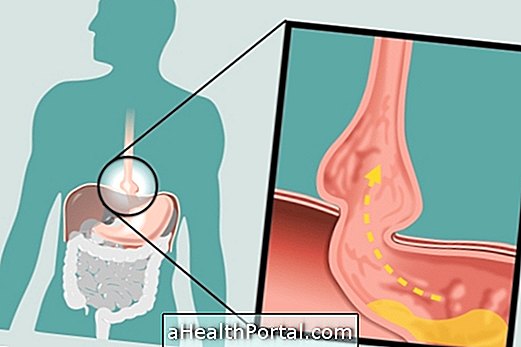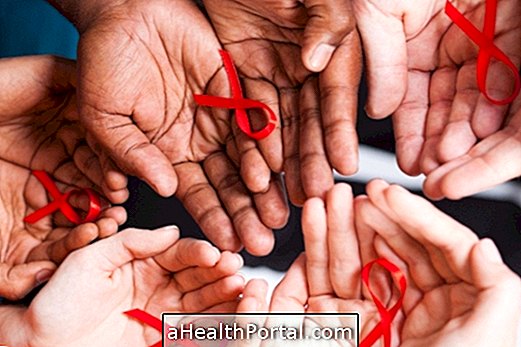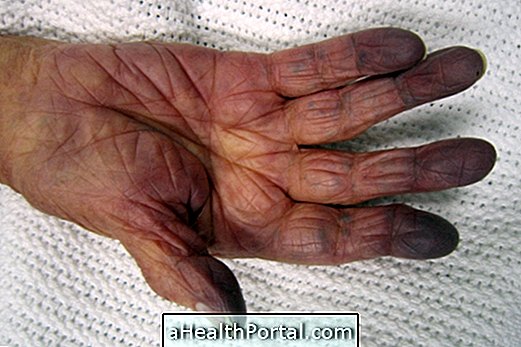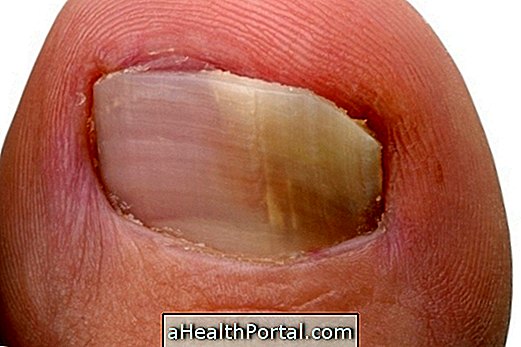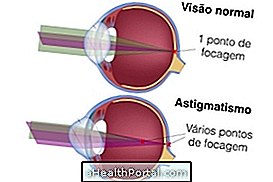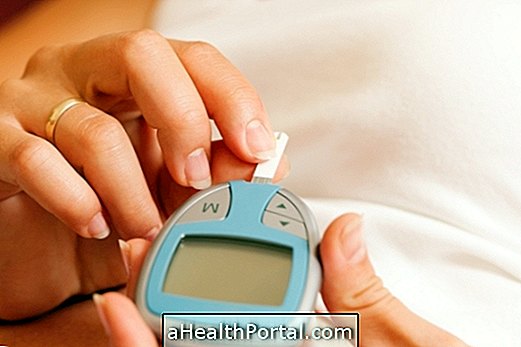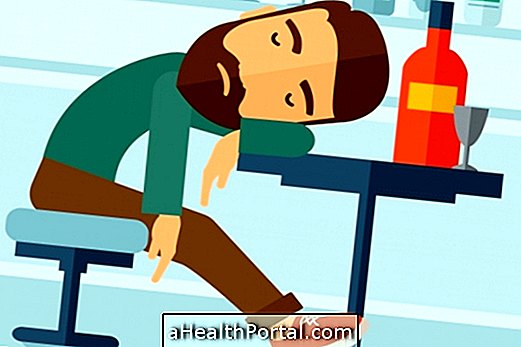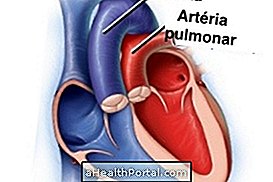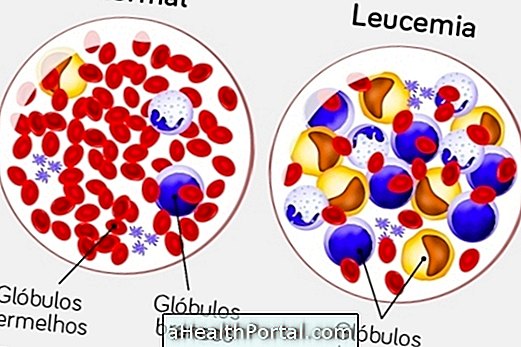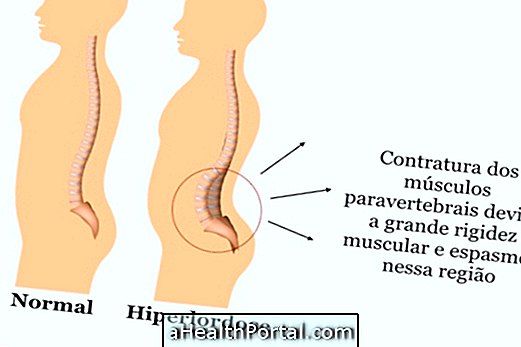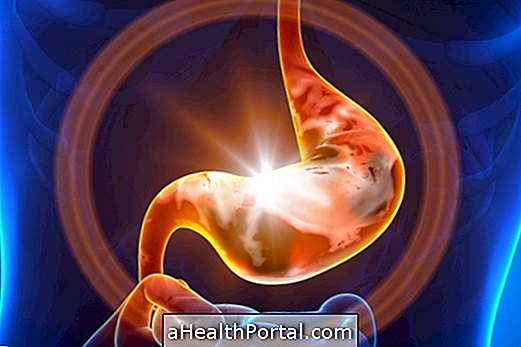The pain at the end of the spine is usually not severe and may be a result of poor posture or repetitive strain, for example, being easily resolved with rest and gentle massage at the pain site. However, when the pain becomes intense and constant, it is important to go to the doctor so that the symptoms are evaluated, the diagnosis is made and thus the treatment can be started.
Treatment for end-of-spine pain can be done with the use of muscle or anti-inflammatory relaxers, depending on the type of pain and medical guidance, as well as physical therapy sessions for muscle strengthening and symptom relief.
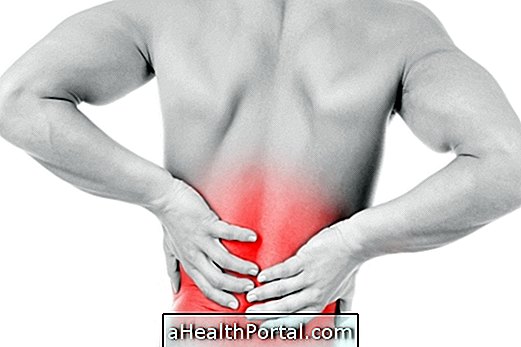
Main causes
Pain at the end of the spine is usually not severe and can be easily resolved with rest, physical therapy sessions and use of anti-inflammatory drugs, for example. The main causes of back pain are:
1. Low back pain
Low back pain refers to pain at the end of the spine that may or may not be accompanied by pain in the legs or buttocks that may last less than or more than 1 month. Low back pain can be caused by poor posture, bad back, sedentary lifestyle, local infection or even tumor. Know other causes of low back pain.
What to do: In the case of low back pain, treatment can be done with the use of medications, such as muscle relaxants and anti-inflammatories, for example, always with medical advice. Physiotherapy may also be recommended for strengthening the muscles and reducing pain.
2. Sciatic nerve inflammation
The sciatic nerve begins at the end of the spine and, when inflamed or compressed, can cause severe pain in the back of the spine, pain in the gluteus and legs. Inflammation of the sciatic nerve can cause pain beyond difficulty to keep the spine erect and lower and pain when walking. Learn more about the sciatic nerve.
What to do: When you notice the first symptoms of inflammation in the sciatic nerve, it is important to consult an orthopedist for the diagnosis and treatment can be started, which can be done with the use of anti-inflammatories to relieve symptoms, in addition to of physiotherapy sessions to reduce pain, inflammation and strengthen the lumbar and thus improve the quality of life. Here's how to treat the sciatic nerve at home.
3. Repetitive effort
The practice of repetitive activities involving the lower back, such as riding a bicycle or lowering many times during the day, can cause inflammation of the muscles and ligaments of the region, resulting in pain at the end of the spine.
What to do: In case of pain at the end of the spine due to repetitive strain, it is advisable to rest and, if necessary, take anti-inflammatory drugs, such as Diclofenac, for example, to relieve symptoms. However, if the pain does not go away even with the use of anti-inflammatories, it is important for the orthopedist to investigate the cause of the pain.

4. Poor posture
Poor posture is one of the main causes of pain at the end of the spine, because incorrect sitting posture, for example, can cause too much pressure on the coccyx resulting in low back pain.
What to do: If the pain at the end of the spine is a result of poor posture, you can get up during the day to stretch and lightly massage the pain site. In addition, it is important to correct the posture to avoid further pain or the emergence of other problems. Check out 5 tips for achieving correct posture.
5. Herniated Disc
The disc herniation happens when the intervertebral disc leaves the place, leading to the compression of the nerves of the region and resulting in pain in the lumbar region. In addition to the pain at the end of the spine, there may be difficulty walking and lowering, weakness of the legs and even change in the functioning of the bladder due to compression of the local nerves. Find out what are the symptoms of herniated disc.
What to do: When a herniated disc is suspected, it is important to go to the orthopedist for a diagnosis through evaluation of symptoms and imaging tests, such as x-ray. In addition, it is important to conduct physiotherapy sessions to improve the quality of life of the person. See how physical therapy for herniated disc is done.
6. Renal calculus
The renal calculus has as its main symptom the acute pain in the end of the back, more precisely in the lateral region, that arises due to the presence of stones in the kidneys that provoke inflammation and obstruction of the flow of urine in the urinary tract. See what are the signs and symptoms of kidney stone.
What to do: If symptoms of kidney failure develop, it is important to consult a nephrologist so that tests can be done to identify the presence of the stones and their size so that the best form of treatment can be defined. However, to avoid kidney stone formation, it is important to have a healthy lifestyle, a balanced diet and regular exercise, and drink at least 2 liters of water throughout the day. Learn what to do to relieve kidney colic.
When to go to the doctor
It is indicated to go to the doctor when the pains at the end of the spine are intense, constant, do not pass even at rest and other symptoms appear, such as:
- Pain in the leg or gluteus;
- Sensation of numbness or tingling in the back, legs or buttocks;
- Difficulty in making movements, such as walking, lowering or lifting;
- Shortness of breath.
The visit to the doctor is important so that examinations are carried out that allow to conclude diagnosis and thus, to start the treatment as soon as possible, avoiding the progression of the pain and complications.


